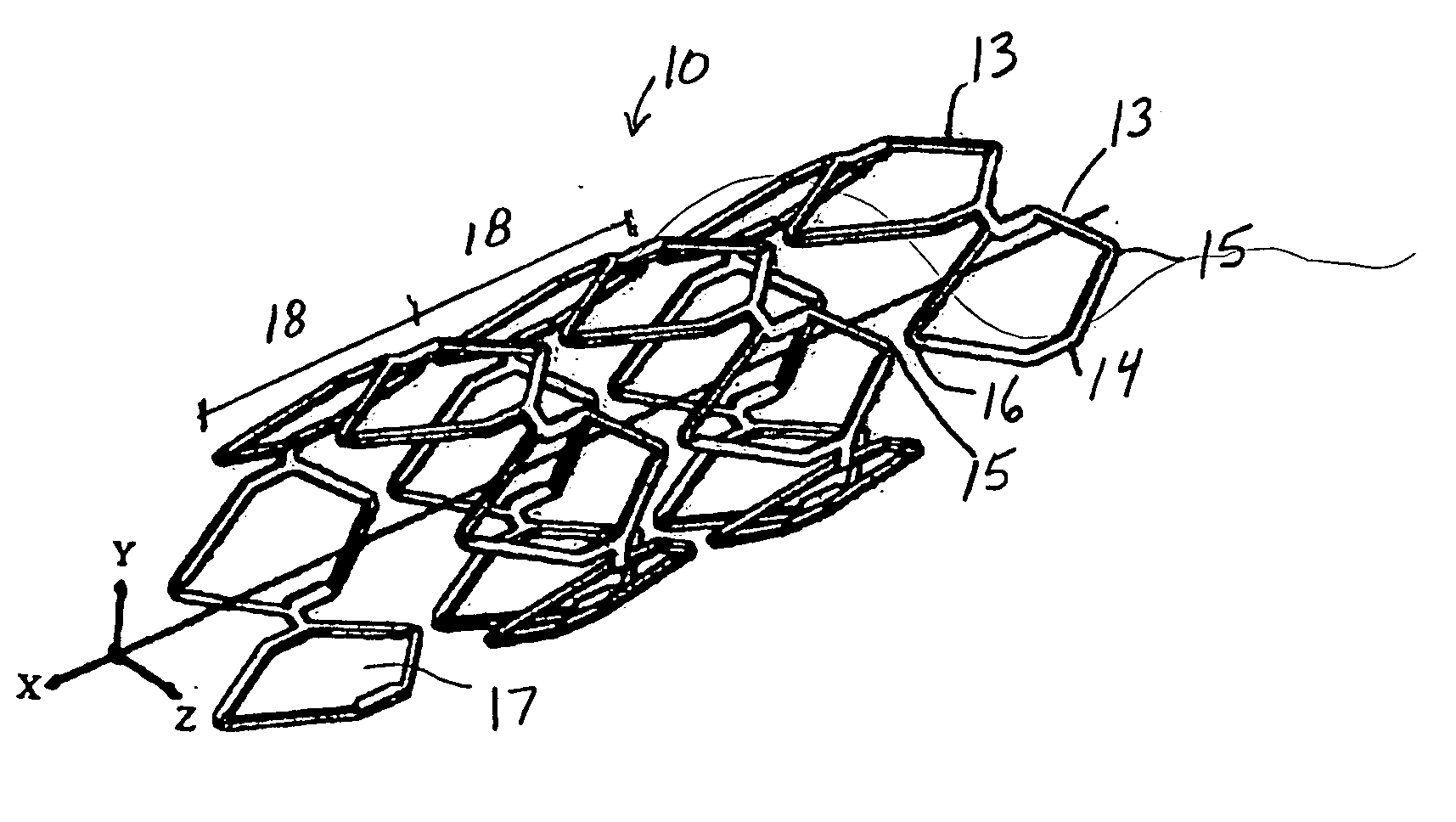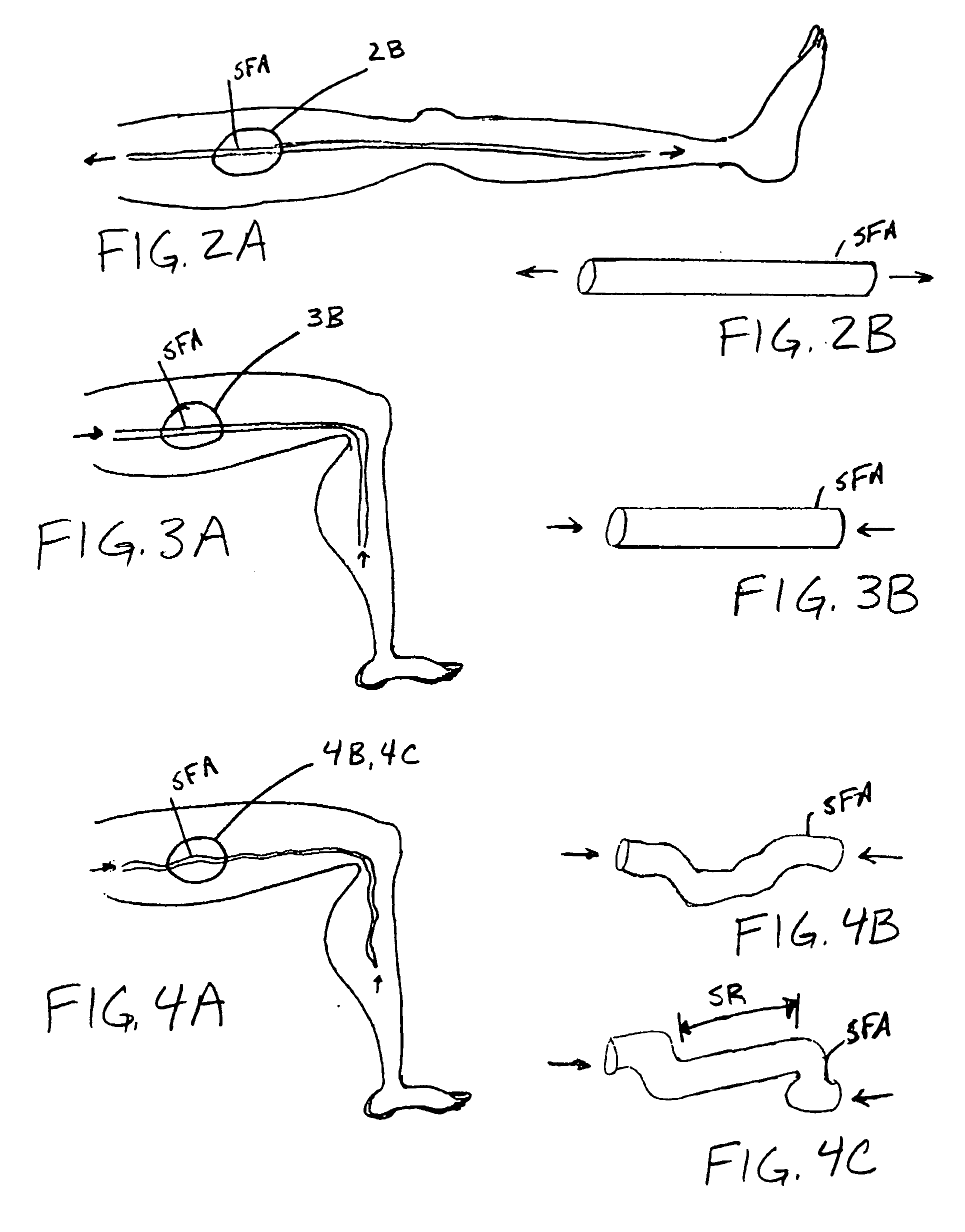Fracture-resistant helical stent incorporating bistable cells and methods of use
a helical stent, bistable technology, applied in the field of vascular prostheses, can solve the problems of plastically deformable stents, stents that are not suitable for blood vessels, plastically deformable stents, and rapid work hardening and fracture when subjected to multiple bending cycles
- Summary
- Abstract
- Description
- Claims
- Application Information
AI Technical Summary
Benefits of technology
Problems solved by technology
Method used
Image
Examples
Embodiment Construction
[0045] The present invention is directed to a vascular prosthesis having a helical configuration and formed of a plurality of bistable cells. The bistable mode of operation of the vascular prosthesis (hereinafter also referred to as a “stent”) of the present invention combines the superior fatigue resistance of previously known self-expanding helical stents with the superior resistance to radial compressive forces and positive fixation characteristics of previously known plastically deformable stents. The result is a vascular prosthesis having high radial strength, improved resistance to fatigue fracture and low potential for migration.
[0046] The vascular prosthesis of the present invention is expected to be especially advantageous when deployed in blood vessels subject to dynamic loading, such as the superficial femoral artery. Attempts to use self-expanding helical stents and plastically deformable stents in such vessels often resulted in stent failure, due either to fatigue frac...
PUM
 Login to View More
Login to View More Abstract
Description
Claims
Application Information
 Login to View More
Login to View More - R&D
- Intellectual Property
- Life Sciences
- Materials
- Tech Scout
- Unparalleled Data Quality
- Higher Quality Content
- 60% Fewer Hallucinations
Browse by: Latest US Patents, China's latest patents, Technical Efficacy Thesaurus, Application Domain, Technology Topic, Popular Technical Reports.
© 2025 PatSnap. All rights reserved.Legal|Privacy policy|Modern Slavery Act Transparency Statement|Sitemap|About US| Contact US: help@patsnap.com



